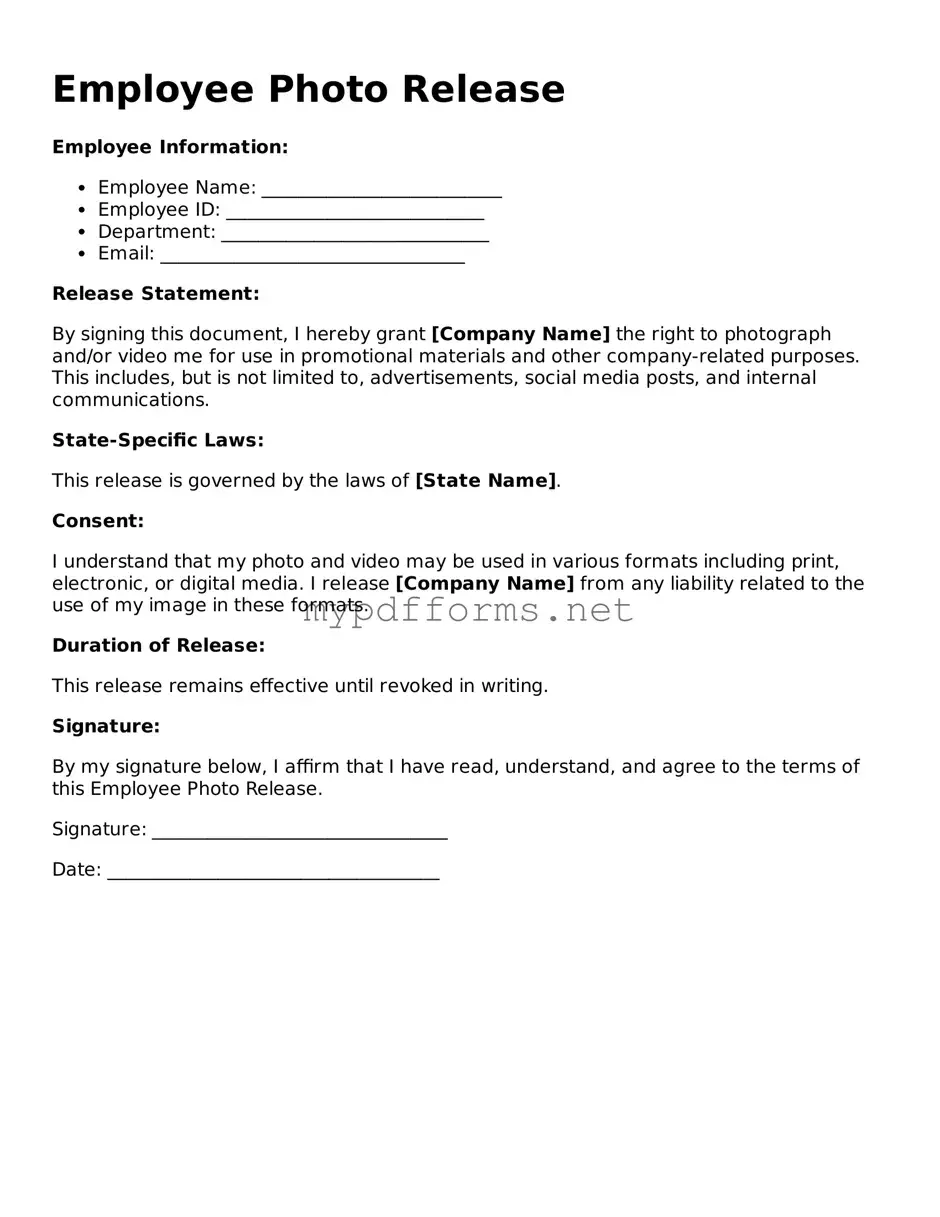The Model Release form is similar to the Employee Photo Release form in that it grants permission for the use of an individual's likeness in photographs or videos. This document is often used by photographers and artists to ensure they can legally use images of their subjects in various media. Both forms focus on the individual's consent and outline the intended uses of the images, protecting the rights of the person depicted while allowing the creator to share their work publicly.
The Talent Release form serves a similar purpose, especially in the entertainment industry. It is used when actors, musicians, or other performers are filmed or recorded. Like the Employee Photo Release form, it ensures that the individual agrees to the use of their image or performance for promotional or commercial purposes. Both documents emphasize the importance of consent and clarify how the images or recordings will be used, thus safeguarding the rights of the talent involved.
A Video Release form is akin to the Employee Photo Release form, focusing specifically on video recordings. This document allows filmmakers or content creators to obtain permission to use an individual’s likeness in their video projects. Both forms require the individual’s consent and detail the scope of usage, ensuring that the rights of the person featured are respected while allowing for creative expression in visual media.
In the realm of film and television, obtaining permission to use an actor's likeness is essential, which is where the Actor Release form comes into play. This document not only secures the legal right to utilize an actor's image and performance but also protects filmmakers from potential legal disputes that could arise without such consent.
The Social Media Release form is another document that shares similarities with the Employee Photo Release form. It is used when individuals agree to have their images or videos posted on social media platforms. Like the Employee Photo Release, it highlights the importance of consent and outlines how the content will be shared online. This form helps protect both the individual’s privacy and the rights of the content creator in the digital space.
The Event Photography Release form is closely related, as it pertains to images taken at public or private events. This document allows photographers to use images of attendees for promotional purposes. Similar to the Employee Photo Release form, it ensures that attendees understand how their likeness may be used and provides a clear framework for consent, fostering transparency between the photographer and the subjects.
The Commercial Use Release form is relevant for individuals who may be featured in advertisements or marketing materials. This document grants permission for the use of one’s image in a commercial context. It aligns with the Employee Photo Release form by emphasizing consent and detailing the intended use of the image, ensuring that the rights of the individual are protected while allowing businesses to promote their products or services effectively.
The Artwork Release form is similar in that it allows artists to use an individual’s likeness in their artwork. This document ensures that the artist has permission to create and display their work, which may include portraits or illustrations. Both the Artwork Release and the Employee Photo Release forms focus on consent, making it clear how the likeness will be used and ensuring that the individual’s rights are upheld.
Finally, the Medical Release form, while different in context, shares the principle of obtaining consent for the use of personal information. This document is used in healthcare settings to allow medical professionals to share a patient’s information for treatment or research purposes. Like the Employee Photo Release form, it emphasizes the importance of consent and outlines how the information will be used, protecting the individual’s rights and privacy.
